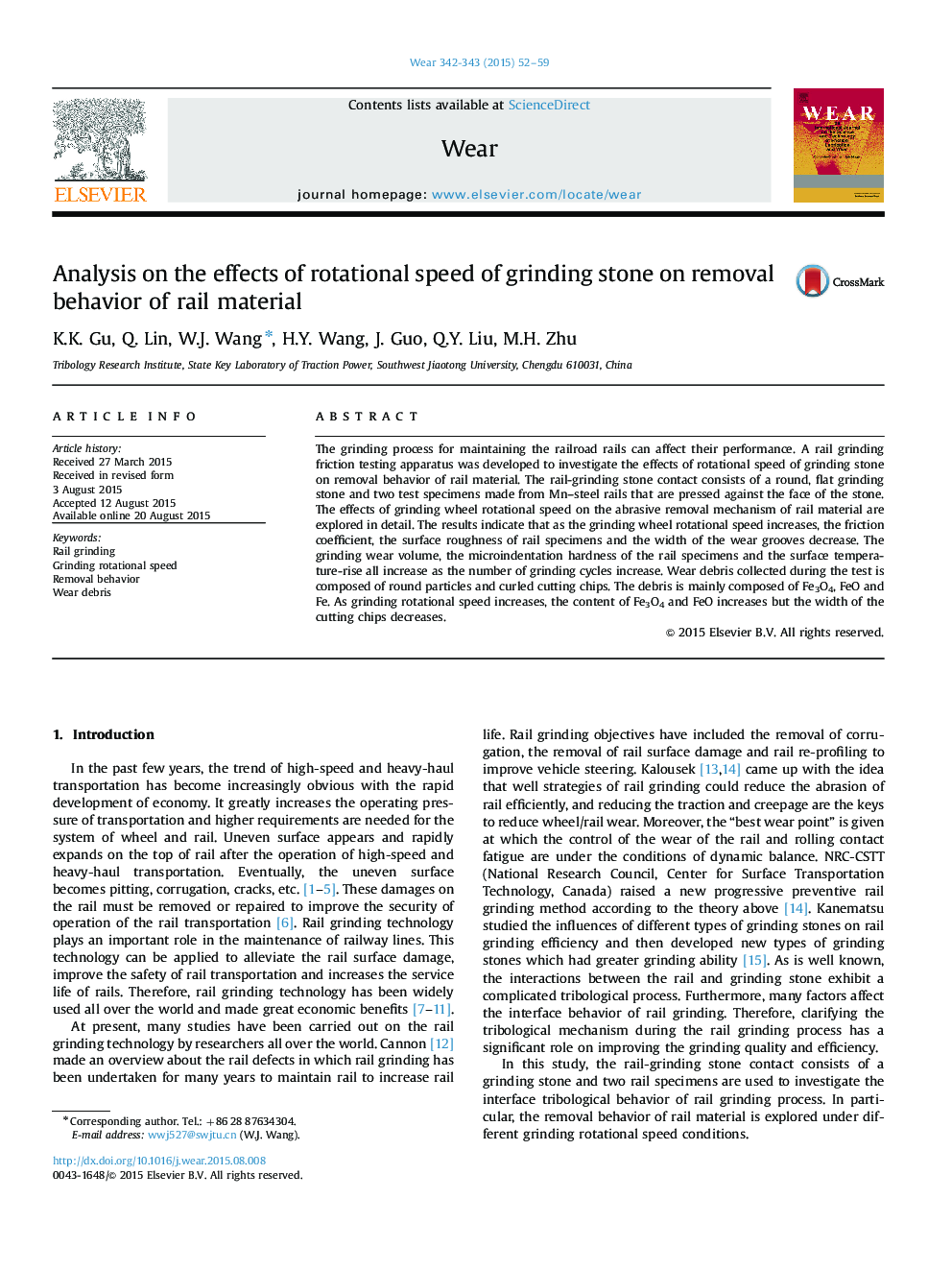| کد مقاله | کد نشریه | سال انتشار | مقاله انگلیسی | نسخه تمام متن |
|---|---|---|---|---|
| 616979 | 1454970 | 2015 | 8 صفحه PDF | دانلود رایگان |
• The grinding contact consists of a grinding stone and two rail specimens.
• With an increase of grinding speed, the friction coefficients decrease.
• The rail material is removed by the abrasive grains during the cutting stage.
• The wear debris is composed of round particles and curled cutting chips.
The grinding process for maintaining the railroad rails can affect their performance. A rail grinding friction testing apparatus was developed to investigate the effects of rotational speed of grinding stone on removal behavior of rail material. The rail-grinding stone contact consists of a round, flat grinding stone and two test specimens made from Mn–steel rails that are pressed against the face of the stone. The effects of grinding wheel rotational speed on the abrasive removal mechanism of rail material are explored in detail. The results indicate that as the grinding wheel rotational speed increases, the friction coefficient, the surface roughness of rail specimens and the width of the wear grooves decrease. The grinding wear volume, the microindentation hardness of the rail specimens and the surface temperature-rise all increase as the number of grinding cycles increase. Wear debris collected during the test is composed of round particles and curled cutting chips. The debris is mainly composed of Fe3O4, FeO and Fe. As grinding rotational speed increases, the content of Fe3O4 and FeO increases but the width of the cutting chips decreases.
Journal: Wear - Volumes 342–343, 15 November 2015, Pages 52–59
